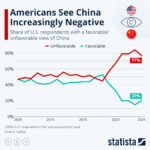

Economic growth increased at a 2.1% annual rate in the second quarter of this year, a slight downward revision from the preliminary estimate.
The latest update, the second of three, indicates that second-quarter GDP growth was higher than the preceding quarter’s 2% clip, showing that the economy has remained robust even as the Federal Reserve continues to hike interest rates in response to inflation.
The report shows that consumer spending, as measured by personal consumption expenditures, increased in the second quarter, a sign that U.S. economic activity is still humming despite the central bank’s tightening.
After more than a year of successive interest rate hikes, some by very aggressive margins, the Fed opted last month to raise rates again, bringing its target range to 5.25% to 5.50% — the highest level in more than two decades.
Rate increases have the effect of slowing economic output and declining GDP is the biggest indicator of an economic downturn or recession.
Typically, two back-to-back quarters of negative GDP growth are indicative of a recession. So the fact that the GDP was positive in the first quarter and the second quarter is welcome news to economists, many of whom were predicting just months ago the country might be in a recession by now.
Inflation has also been meaningfully slowing and was at a 3.2% annual pace in July, according to the consumer price index.
Still, the Fed has made it clear that it has made taming inflation its No. 1 priority and has left the door open to more rate increases before the year is up, should officials deem it necessary.
Last week, Federal Reserve Chairman Jerome Powell, in his annual Jackson Hole speech, hinted that more tightening is possible but that officials will “proceed carefully” when deciding their next steps. He walked a fine line between suggesting rate hikes are winding down and hinting that more are on the way.
“At upcoming meetings, we will assess our progress based on the totality of the data and the evolving outlook and risks,” Powell said. “Based on this assessment, we will proceed carefully as we decide whether to tighten further or, instead, to hold the policy rate constant and await further data.”
CLICK HERE TO READ MORE FROM THE WASHINGTON EXAMINER
The labor market has held up remarkably well in light of the hikes, although there have been some signs of softening. This week’s release of the Job Openings and Labor Turnover Survey showed that the number of job openings in the U.S. decreased to 8.8 million in July, the lowest that number has been in more than two years.
The next employment report, which measures how the job market performed in August, is set to be released on Friday morning.





